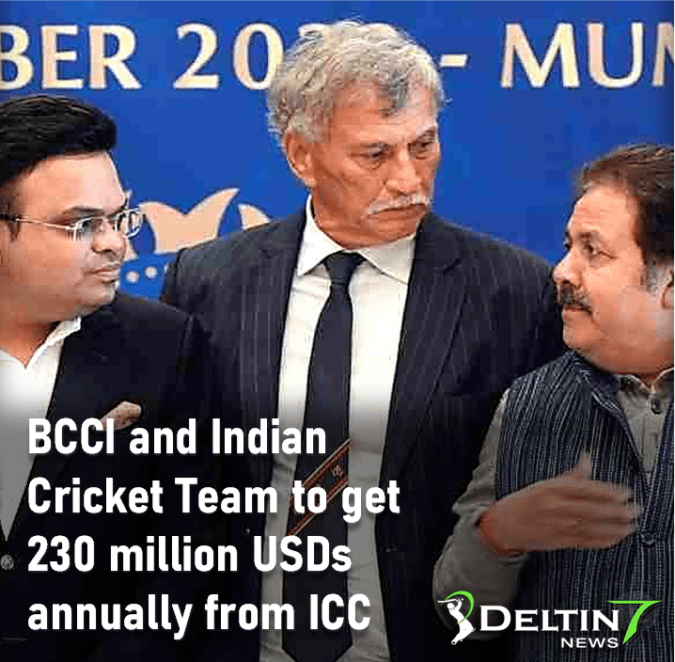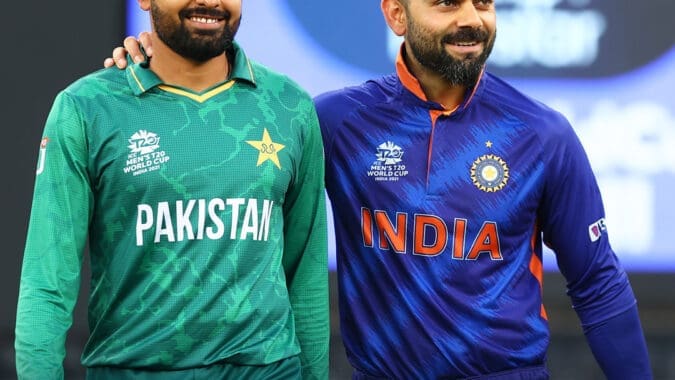
BCCI and Indian Cricket Team get 230 million USDs annually from ICC
The anticipation is reaching a fever pitch as the ICC’s new revenue-distribution model takes center stage, and it appears that the Board of Control for Cricket in India (BCCI) is poised to emerge as the undisputed champion of financial prowess. With the proposed model, the BCCI is set to claim a staggering 38.5% of the ICC’s net surplus earnings over the next four years, solidifying its position as the dominant force in the cricketing world. Brace yourselves, cricket enthusiasts, as we delve into the thrilling details of this monumental financial shake-up.
Picture this: a cricketing landscape dominated by the mighty BCCI, basking in the glory of earning approximately US$ 230 million per year from 2024 to 2027. That’s a mind-boggling sum that not only dwarves the earnings of its closest competitor but also reinforces the BCCI’s unrivaled status as the financial powerhouse of cricket. In this proposed model, the BCCI’s share of the ICC’s annual earnings, estimated at US$ 600 million, amounts to a jaw-dropping 38.5%.
The next highest earner, the England and Wales Cricket Board (ECB), pales in comparison, projected to receive a mere US$ 41.33 million or 6.89% of the total earnings. Following closely is Cricket Australia (CA), with a potential earning of US$ 37.53 million (6.25%).
Among the remaining nine Full Members, only the Pakistan Cricket Board (PCB) is expected to surpass the US$ 30 million mark, potentially receiving US$ 34.51 million (5.75%). The remaining eight Full Members find themselves below the 5% threshold, left to contend with smaller slices of the financial pie.
This redistribution of wealth is based on the estimated earnings of the ICC, an astonishing US$ 3.2 billion solely from the sale of media rights. The recent sale of rights across five different global regions, including the lucrative Indian market, played a pivotal role in amassing this colossal sum. In fact, Disney Star* made a historic deal, paying slightly over US$ 3 billion for a four-year period, further amplifying the financial clout of Indian cricket.
Now, let’s unpack the proposed financial model that lies at the heart of this grand restructuring. The model, initially conceived by an ICC team, underwent rigorous development and refinement by the governing body’s finance and commercial affairs (F&CA) committee. It was subsequently presented to the ICC Board, where some aspects were shared, including the criteria used to calculate the distribution. Full Members were then provided with the detailed document outlining the proposed model.
These criteria, known as “component weightings,” are designed to evaluate each Full Member’s contribution and shape their respective earnings. The four pillars of assessment are cricket history, performance in ICC events over the past 16 years, contribution to the ICC’s commercial revenue, and an equal weightage for Full Member status. Sound familiar? Indeed, these elements closely mirror the principles established in the Big Three takeover of 2014, albeit with a few nuanced differences.
Under the proposed model, every Full Member begins on equal footing, initially receiving an 8.3% share as recognition of their Full Member status. However, the “effective percentage” each board ultimately receives is contingent upon an average weightage derived from the four criteria, and this allocation can rapidly fluctuate based on the other parameters. Of particular importance is the commercial value brought by each board, a factor that undeniably tilts the scales in favor of the BCCI.
In short, the ICC’s proposed revenue-distribution model for the 2024-2027 cycle is set to establish the Board of Control for Cricket in India (BCCI) as the dominant force, with the Indian board projected to earn a staggering US$230 million per year.
This accounts for approximately 38.5% of the ICC’s annual earnings of US$600 million, solidifying the BCCI as the primary beneficiary. In contrast, the second highest earner, the England and Wales Cricket Board (ECB), is projected to earn only US$41.33 million, highlighting the significant disparity.
The proposed model, which draws inspiration from the Big Three takeover in 2014, factors in criteria such as cricket history, performance in ICC events, and commercial revenue contribution. With the BCCI commanding a commercial weightage of 85.3%, it underlines India’s substantial contribution to the global cricket economy. The model is currently under review by the ICC Board, with Full Members expected to provide feedback before a final decision is made.














